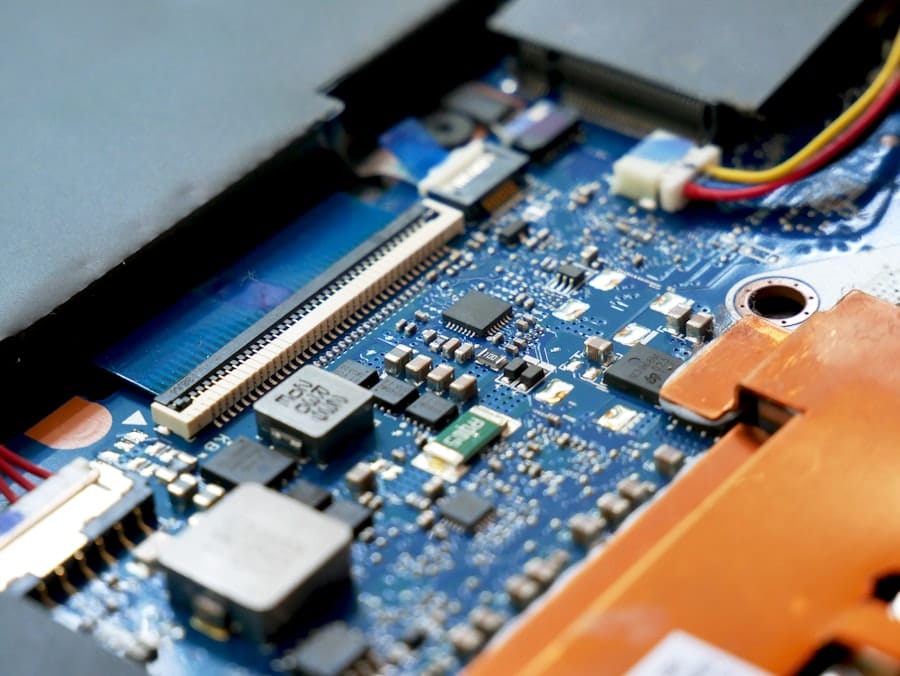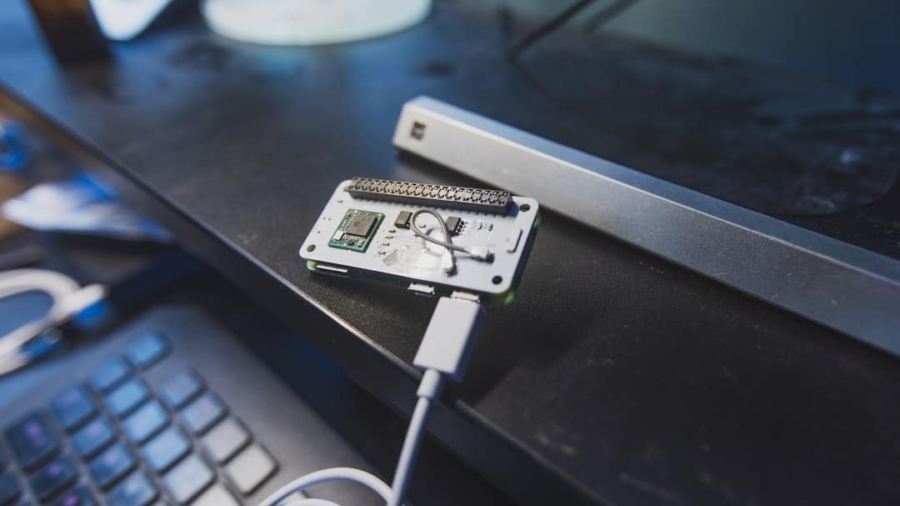The Internet of Things (IoT) has rapidly evolved from a niche concept to a fundamental aspect of modern technology, influencing various sectors such as healthcare, agriculture, smart cities, and home automation. As the number of connected devices continues to surge, the integration of these devices into cohesive ecosystems has become increasingly vital. Multi-device integration allows for seamless communication and interaction among various IoT devices, enhancing their functionality and providing users with a more comprehensive experience.
For instance, in a smart home environment, integration enables devices like smart thermostats, security cameras, and lighting systems to work together, creating an automated and responsive living space that adapts to the occupants’ needs. Moreover, the growing importance of multi-device integration is underscored by the demand for interoperability among devices from different manufacturers. Consumers expect their devices to communicate effortlessly, regardless of brand or model.
This expectation drives innovation and competition in the IoT market, as companies strive to create products that not only function well individually but also contribute to a larger ecosystem. The ability to integrate multiple devices enhances the overall value proposition for consumers, leading to increased adoption rates and a more interconnected world. As industries continue to embrace IoT technologies, the significance of multi-device integration will only intensify, shaping the future of how we interact with technology.
Key Takeaways
- Multi-device integration is becoming increasingly important in IoT ecosystems as more devices are connected and work together to provide seamless experiences.
- Interconnecting multiple devices in IoT can be complex due to different communication protocols, hardware capabilities, and software compatibility issues.
- Security risks and privacy concerns are major challenges in multi-device integration, requiring robust measures to protect sensitive data and user privacy.
- Overcoming compatibility issues in multi-device integration requires standardization, interoperability, and the use of common protocols to ensure seamless communication.
- Standards and protocols play a crucial role in facilitating multi-device integration by providing guidelines for interoperability and communication among different devices.
Understanding the Complexity of Interconnecting Multiple Devices in IoT
Interconnecting multiple devices within an IoT ecosystem presents a myriad of complexities that must be addressed to ensure effective communication and functionality. One of the primary challenges is the diversity of devices and protocols involved. IoT encompasses a wide range of devices, from simple sensors to complex machinery, each with its own communication standards and data formats.
This heterogeneity complicates the integration process, as developers must navigate various protocols such as MQTT, CoAP, and HTTP, each with its own strengths and weaknesses. For example, while MQTT is lightweight and ideal for low-bandwidth environments, it may not be suitable for applications requiring real-time data transmission. Another layer of complexity arises from the need for robust data management and processing capabilities.
As devices generate vast amounts of data, ensuring that this information is accurately collected, transmitted, and analyzed becomes paramount. The challenge lies not only in managing data flow but also in ensuring that the data is contextualized and actionable. For instance, in a smart agriculture scenario, soil moisture sensors must communicate with irrigation systems to optimize water usage based on real-time conditions.
This requires sophisticated algorithms and data analytics tools that can interpret sensor data and trigger appropriate actions across multiple devices. The intricacies involved in interconnecting these devices necessitate a comprehensive understanding of both hardware and software components within the IoT landscape.
Security Risks and Privacy Concerns in Multi-Device Integration

As multi-device integration becomes more prevalent in IoT ecosystems, security risks and privacy concerns emerge as critical issues that cannot be overlooked. Each connected device represents a potential entry point for cyberattacks, making it essential to implement robust security measures throughout the entire ecosystem. For instance, if a smart thermostat is compromised, an attacker could gain access to other connected devices within the home network, leading to unauthorized control over security systems or personal data breaches.
Privacy concerns also arise from the extensive data collection inherent in multi-device integration. Many IoT devices continuously gather personal information about users’ habits and preferences, raising questions about how this data is stored, shared, and utilized.
For example, smart speakers that listen for voice commands may inadvertently capture sensitive conversations or information. Users often lack transparency regarding how their data is used or whether it is shared with third parties. This lack of clarity can erode trust in IoT technologies and hinder widespread adoption.
To address these security and privacy challenges, manufacturers must prioritize implementing end-to-end encryption, regular software updates, and user-friendly privacy settings that empower consumers to control their data.
Overcoming Compatibility Issues in Multi-Device Integration
Compatibility issues pose significant hurdles in achieving seamless multi-device integration within IoT ecosystems. With numerous manufacturers producing devices that utilize different communication protocols and standards, ensuring interoperability can be a daunting task. For instance, a smart home setup may include devices from various brands that use Zigbee, Z-Wave, or Wi-Fi protocols.
Without a common framework for communication, these devices may struggle to work together effectively. This fragmentation can lead to user frustration and limit the overall functionality of the integrated system. To overcome these compatibility challenges, several strategies can be employed.
One approach is the adoption of universal standards that facilitate communication across diverse devices. Initiatives such as Matter aim to create a unified standard for smart home devices, enabling them to interoperate regardless of manufacturer. Additionally, middleware solutions can serve as intermediaries that translate between different protocols, allowing devices to communicate effectively without requiring significant changes to their underlying architecture.
By fostering collaboration among manufacturers and promoting adherence to common standards, the industry can pave the way for smoother multi-device integration and enhance user experiences.
The Role of Standards and Protocols in Facilitating Multi-Device Integration
Standards and protocols play a pivotal role in facilitating multi-device integration within IoT ecosystems by providing a common language for devices to communicate effectively. These frameworks establish guidelines for data exchange, ensuring that devices from different manufacturers can interact seamlessly. For example, protocols like MQTT (Message Queuing Telemetry Transport) are designed for lightweight messaging between devices, making them ideal for resource-constrained environments such as remote sensors or smart home applications.
By adhering to established standards, developers can create solutions that are more likely to work together without extensive customization. Moreover, the establishment of industry-wide standards fosters innovation by reducing fragmentation in the market.
This shift benefits consumers by providing them with a wider range of compatible options while driving down costs through increased competition. Organizations such as the Internet Engineering Task Force (IETF) and the Institute of Electrical and Electronics Engineers (IEEE) are instrumental in developing these standards, ensuring that they evolve alongside technological advancements. As IoT continues to expand, the importance of robust standards and protocols will only grow, serving as the backbone for successful multi-device integration.
Managing Data Flow and Communication Among Multiple Devices in IoT

Effective management of data flow and communication among multiple devices is crucial for optimizing performance within IoT ecosystems. As devices generate vast amounts of data in real-time, ensuring that this information is transmitted efficiently and accurately becomes paramount. One approach to managing data flow involves implementing edge computing solutions that process data closer to the source rather than relying solely on centralized cloud servers.
By performing initial data analysis at the edge—such as filtering out irrelevant information or aggregating data from multiple sensors—latency can be reduced significantly while minimizing bandwidth usage. In addition to edge computing, employing advanced communication protocols can enhance data flow management among interconnected devices. For instance, using lightweight messaging protocols like MQTT allows for efficient transmission of small packets of data between devices without overwhelming network resources.
Furthermore, implementing Quality of Service (QoS) levels within these protocols ensures that critical messages are prioritized over less important ones, maintaining system reliability even under heavy loads. By strategically managing data flow and communication channels among multiple devices, organizations can create more responsive and efficient IoT ecosystems that deliver real-time insights and actions.
User Experience and Interface Design Challenges in Multi-Device Integration
User experience (UX) plays a vital role in the success of multi-device integration within IoT ecosystems. As users interact with various connected devices—ranging from smartphones to smart appliances—the design of interfaces must facilitate intuitive navigation and control across these platforms. One significant challenge lies in creating a cohesive experience that allows users to manage multiple devices seamlessly without feeling overwhelmed by complexity.
For example, a user may want to adjust their smart thermostat while simultaneously monitoring security cameras through a single application interface. If the design lacks clarity or consistency across different device controls, users may become frustrated or disengaged. Another challenge is ensuring accessibility for diverse user demographics.
As IoT technologies become more prevalent in everyday life, it is essential to consider users with varying levels of technical proficiency or those with disabilities who may require assistive technologies. Designing interfaces that accommodate these needs involves conducting thorough user research and usability testing to identify pain points and preferences among different user groups. By prioritizing user-centered design principles—such as simplicity, clarity, and responsiveness—developers can create interfaces that enhance user satisfaction while promoting greater adoption of multi-device integrated solutions.
Future Trends and Innovations in Multi-Device Integration for IoT Ecosystems
The future of multi-device integration within IoT ecosystems is poised for significant advancements driven by emerging technologies and evolving consumer expectations. One notable trend is the increasing adoption of artificial intelligence (AI) and machine learning (ML) algorithms to enhance device interoperability and automation capabilities. By leveraging AI-driven analytics, IoT systems can learn from user behavior patterns over time, enabling them to anticipate needs and optimize interactions among connected devices automatically.
For instance, a smart home system could learn when occupants typically arrive home and adjust lighting and temperature settings accordingly without requiring manual input. Additionally, advancements in 5G technology are set to revolutionize multi-device integration by providing faster data transmission speeds and lower latency connections. This enhanced connectivity will enable more devices to communicate simultaneously without compromising performance—a crucial factor as the number of connected devices continues to grow exponentially.
Furthermore, innovations such as decentralized networks utilizing blockchain technology may offer new solutions for secure device communication while enhancing transparency regarding data ownership and usage rights. As industries continue to explore new possibilities within IoT ecosystems, collaboration among stakeholders—including manufacturers, developers, policymakers, and consumers—will be essential in shaping the future landscape of multi-device integration. By embracing innovation while addressing challenges related to security, compatibility, and user experience, we can unlock the full potential of interconnected technologies that enhance our daily lives.
In the realm of IoT ecosystems, the integration of multiple devices presents a myriad of challenges, from ensuring seamless communication to maintaining robust security protocols. A related article that delves into the broader implications of technological advancements is How One Founder Realized the Potential of Sustainable Energy. This piece explores how innovative solutions in sustainable energy can complement IoT developments, highlighting the potential for integrated systems to drive efficiency and sustainability in various sectors. By examining these interconnected themes, we gain a deeper understanding of the transformative power of technology in shaping a more sustainable future.
FAQs
What are the challenges of multi-device integration in IoT ecosystems?
The challenges of multi-device integration in IoT ecosystems include interoperability issues, security concerns, data management complexities, and the need for standardized communication protocols.
How do interoperability issues impact multi-device integration in IoT ecosystems?
Interoperability issues can arise when devices from different manufacturers or with different communication protocols need to work together, leading to compatibility and connectivity challenges.
What are the security concerns related to multi-device integration in IoT ecosystems?
Security concerns in multi-device integration include the risk of unauthorized access, data breaches, and the potential for compromised devices to affect the entire ecosystem.
What complexities are involved in managing data in multi-device integration in IoT ecosystems?
Managing data in multi-device integration involves dealing with large volumes of data from diverse sources, ensuring data accuracy and consistency, and addressing data privacy and compliance requirements.
Why is the need for standardized communication protocols important in multi-device integration in IoT ecosystems?
Standardized communication protocols are essential for ensuring seamless connectivity and interoperability between devices, enabling efficient data exchange and integration within the IoT ecosystem.

